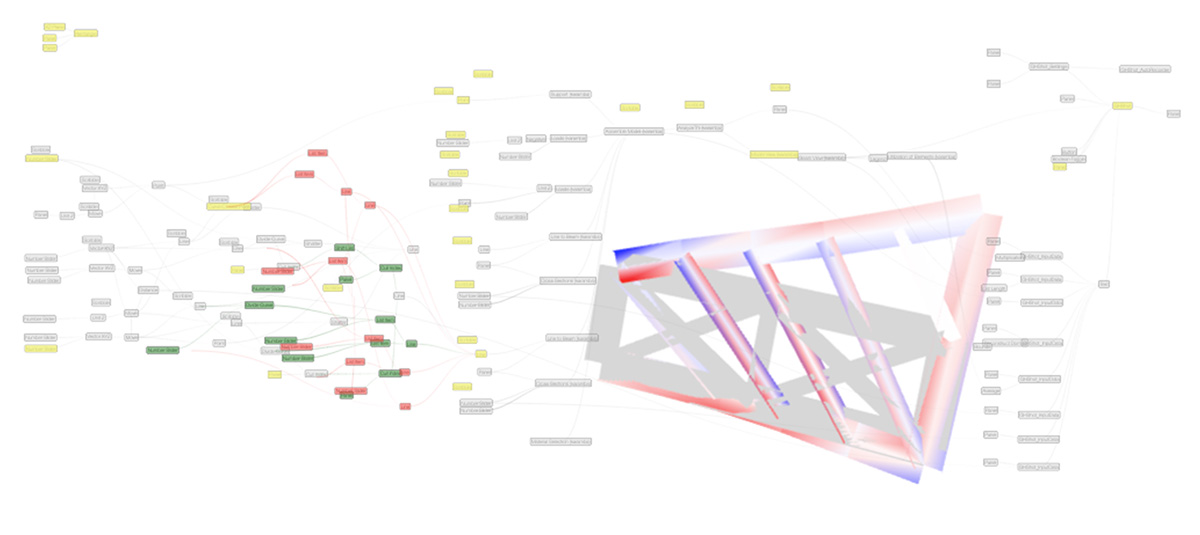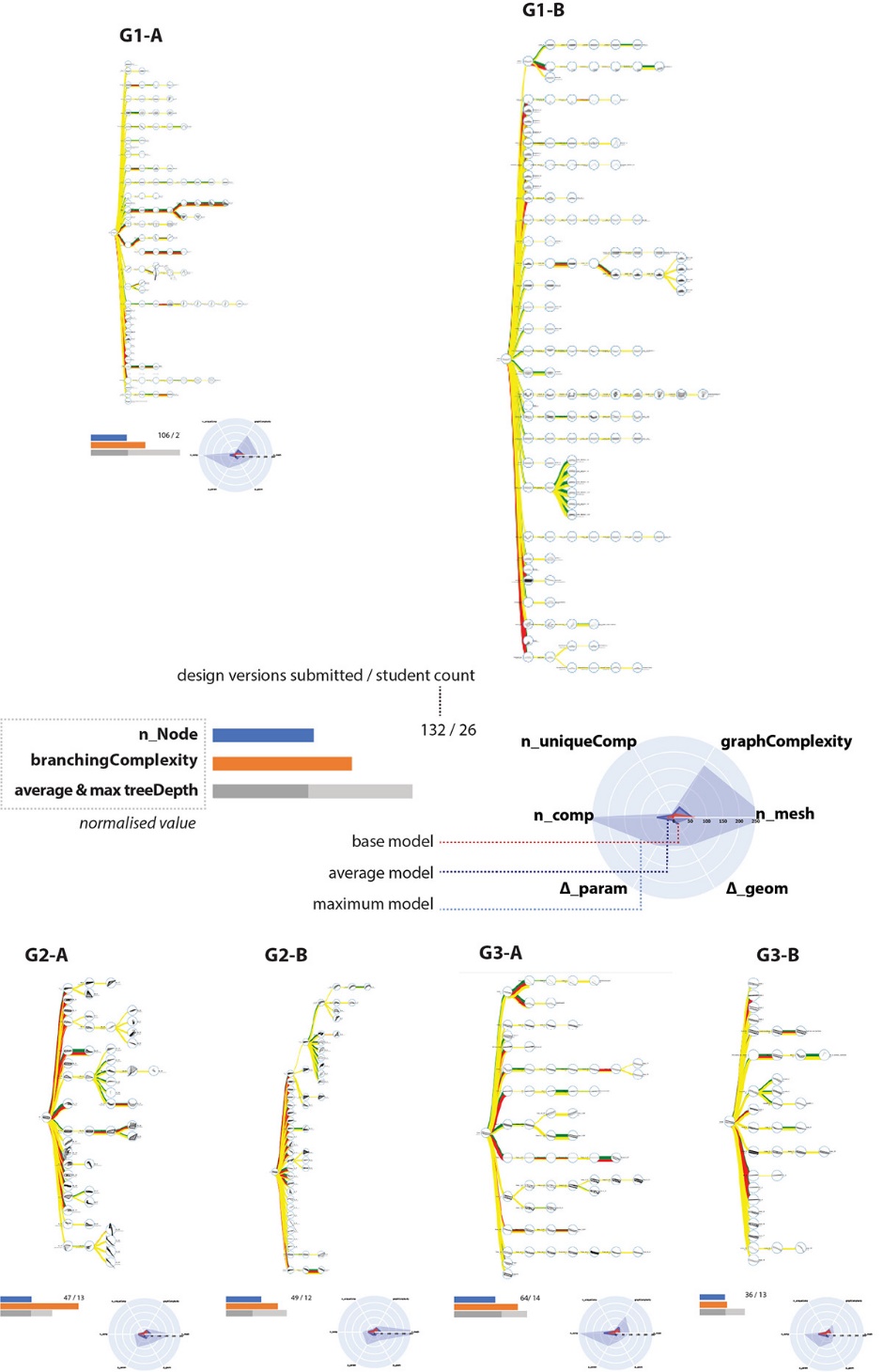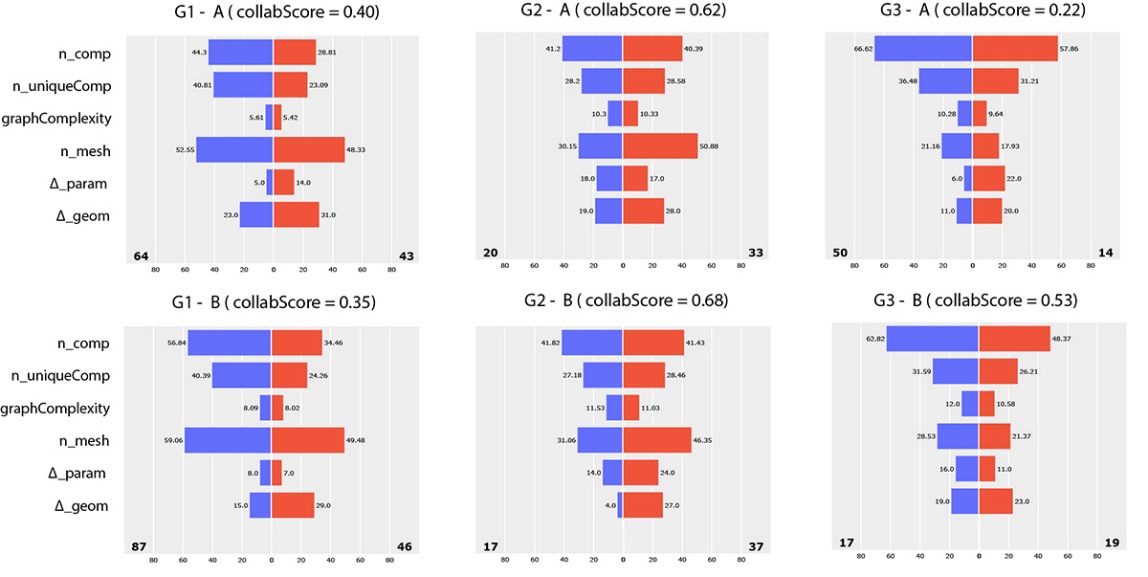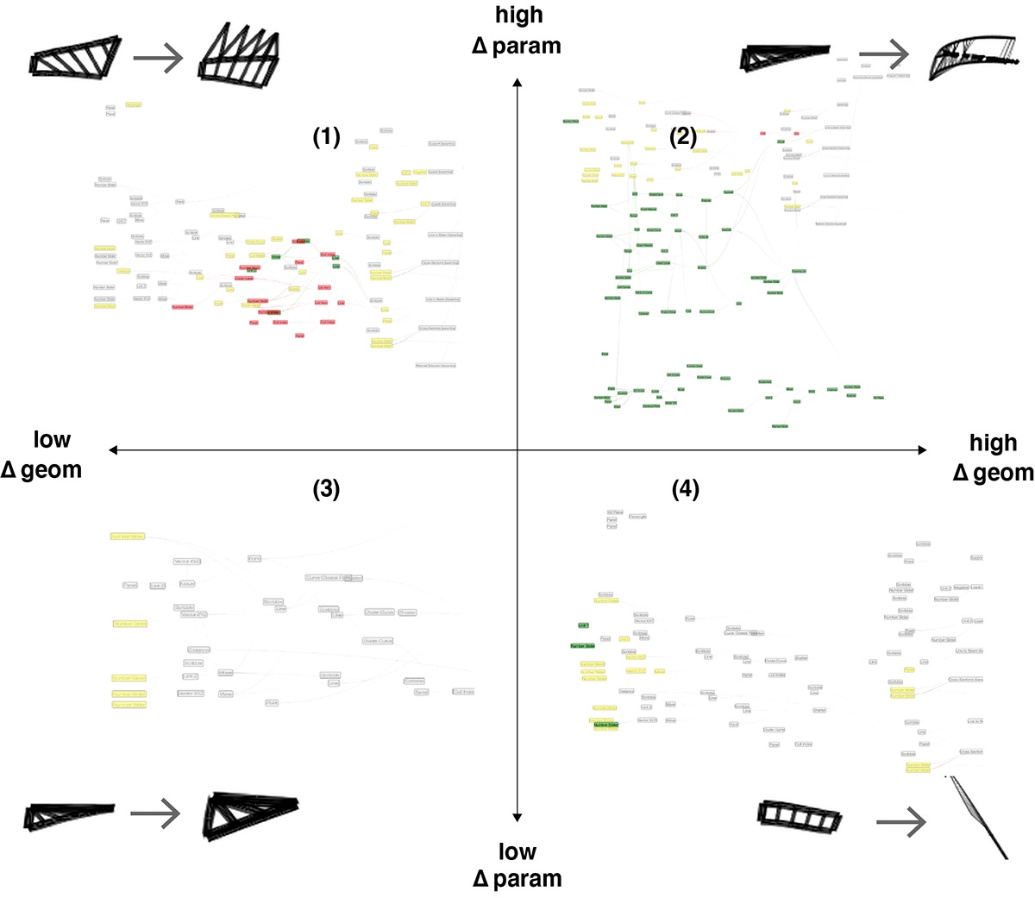Collaborative Environment for Parametric Design
CAPTURING AND EVALUATING PARAMETRIC DESIGN EXPLORATION IN A COLLABORATIVE ENVIRONMENT
Verina Cristie1, Nazim Ibrahim2, and Sam Conrad Joyce3
1,2,3Singapore University of Technology and Design

Figure 1. GHShot Design Versioning Grasshopper plugin.
Although parametric modelling and digital design tools have become ubiquitous in digital design, there is a limited understanding of how designers apply them in their design processes. This paper looks at the use of GHShot versioning tool developed by the authors used to capture and track changes and progression of parametric models to understand early-stage design exploration and collaboration empirically.
We introduce both development history graph-based metrics (macro-process) and parametric model and geometry change metric (micro-process) as frameworks to explore and understand the captured progression data.

Figure 2. Base Truss Parametric Model given to the cohorts.
These metrics, applied to data collected from three cohorts of classroom collaborative design exercises, exhibited students‘ distinct modification patterns such as major and complex creation processes or minor parameter explorations. Finally, with the metrics’ applicability as an objective language to describe the (collaborative) design process, we recommend using versioning for more data-driven insight into parametric design exploration processes.

Figure 3. To change from original (grey shaded) to current geometry (coloured), parametric components were deleted (red), added (green), and changed (yellow).
With the rise of the web in the 90s, the concept of the Virtual Design Studio (Wojtowicz, 1994) was born into the architectural pedagogy, where design projects were done over the network. During subsequent implementations of this concept, learning and collaboration was the focus, such as ETH Zurich’s phase(x) (Hirschberg & Wenz, 1997), Harvard GSD’s OpenD (Meagher, et al., 2005) or AA Design Research Lab’s Collaborative Distributed Learning (Steele, 2006).

Students were to exchange design works periodically, modify them creatively in a collective authorship scenario on a common web platform. However, such platforms often remained one-off technological proofs-of-concept, and lacked further investigation into the design process (Achten, 2009).

Figure 4. Design change tree and metrics visualisation from 3 cohorts. Radar areas are indicative of the initial metrics value and the extent of the students design space exploration.
While in the past evaluating design processes required subject experts, recent developments has shown the ability to perform automated quantitative evaluation of parametric model’s geometric diversity (Brown & Mueller, 2018), and flexibility (Davis 2013).
In our context, we are interested in being able to meaningfully understand parametric design beyond its individual model level and probe further into its development process and collaboration, especially with the cohorts’ design versions data. Both a macro (overall development) and micro (detailed, versions-based) approach are used for evaluation.

Figure 5. G2-B’s 13 clusters of design ideas from the design versions.
Geometric change can be the extent of design space explored (Brown & Mueller, 2019) and is often attributed as a measure of design creativity as it means designers are not fixated on a particular design (Nathan, 2015). To measure this, Hausdorff distance calculation from Meshlab library (Cignoni et al., 2008) was used.
This distance (Δ geom) is defined as the maximum distance of a set to the nearest point in another set. Hence, the higher the distance value is, the more dissimilar the two geometries are (see Table 3). The nMesh metric mentioned previously was not used because the change in the mesh count does not necessarily represent the change geometry topology.

Figure 6. Metrics comparison of the cohorts. Blue: own design modification, red: other’s.
In this paper, we have demonstrated how collaborative parametric design exploration process can be (1) captured through the practice of versioning and (2) interpreted through the proposed metrics. At the macro level, history tree-related metrics such as the number of nodes, branches, and depth of the tree are used as proxies to describe the design space explored in terms of its size, diversity, and development of ideas.
At the micro-level, design change metrics for both parametric and geometry models were established to evaluate and categorise the modifications performed. For example, the change metrics were useful to see how some students are more versatile in their designs through the wider range of metrics extracted from their design versions.

Figure 7. G2’s design versions’ Δparam and Δgeom plotted and connected per user. Each user occupies a ’zone’.
In the collaboration context, time appears to be a crucial factor: little difference was observed in the change metrics when one was modifying his/her personal design vs others’ in the shorter given time. In contrast, larger and more complex parametric model modifications were observed with own models when longer time is allowed.
Finally, while in this paper we have started utilising data to develop metrics towards understanding the design process better, the availability of such design progression data opens the door to wider possibilities for digital and parametric design.

Figure 8. Four change clusters identified by Δparam and Δgeom.
In software engineering, where versioning was initially used, version data is also used to identify which programmers introduce more bugs (Kim et al., 2006). A similar approach can be used to determine which designers contribute significantly to design development. For example, in a pedagogy context, this can be used to support students who are lagging and support them.
Data collected from multiple years can inform teachers of unique or perhaps shared struggles students face in learning parametric design. Additionally, as the field of architecture continues to adopt various AI technologies, we believe that capturing design process data can play a significant part in bridging the cognitive gap towards building autonomous AI design assistants.




























Comments